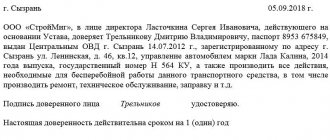Fulfillment of the obligation to pay taxes, fees, insurance premiums (penalties, fines) upon liquidation of an organization is regulated by Art. 49 of the Tax Code of the Russian Federation, and during its reorganization - Art. 50 Tax Code of the Russian Federation.
The Tax Code does not contain special rules establishing deadlines for filing tax returns for the last reporting (tax or accounting) period of activity of a reorganized or liquidated organization, which in practice raises questions on the part of taxpayers.
What are the procedures and deadlines for filing tax returns during the liquidation and reorganization of a taxpayer? We'll tell you in this article.
Who fulfills the obligations to pay taxes during the liquidation (reorganization) of a taxpayer?
The obligation to pay taxes, fees, insurance premiums (penalties, fines) of the liquidated organization is fulfilled by the liquidation commission at the expense of the funds of the said organization, including those received from the sale of its property (Clause 1 of Article 49 of the Tax Code of the Russian Federation).
The obligation to pay taxes of a reorganized legal entity is fulfilled by its legal successor(s) in the manner established by Art. 50 Tax Code of the Russian Federation.
According to this article, the legal successor in terms of fulfilling the obligation to pay taxes is recognized as:
- in the case of a merger of several legal entities - the legal entity resulting from such merger (clause 4);
- when one legal entity is merged with another legal entity - the legal entity that merged it (clause 5);
- in case of division - legal entities arising as a result of such division (clause 6);
- when transforming one legal entity into another - a newly emerged legal entity (clause 9).
According to paragraphs 7 and 8 of Art. 50 of the Tax Code of the Russian Federation, if there are several legal successors, the share of participation of each of them in the performance of the duties of the reorganized legal entity to pay taxes is determined in the manner prescribed by civil law. When one or more legal entities are separated from a legal entity, succession in relation to the reorganized legal entity in terms of the performance of its obligations to pay taxes (penalties, fines) does not arise. In a number of cases provided for by these paragraphs, by a court decision, newly emerged (split-off) legal entities may jointly fulfill the obligation to pay taxes of the reorganized entity.
Grounds for liquidation
The grounds for liquidation of a legal entity are as follows:
- The decision of the general meeting of shareholders , adopted by a qualified majority (at least ¾).
- Unanimous decision of the participants.
- Expiration of the terms of activity or confirmation of the purposes of creation.
- Invalidation of registration by the court.
- The decision of the Federal Administration to recognize the structure of the balance sheet of a state-owned enterprise as unsatisfactory and the lack of real potential for restoring solvency.
- Court decision on forced liquidation.
Tax period - calendar year
The calendar year is the tax period for the following taxes:
- Personal income tax (Article 216 of the Tax Code of the Russian Federation);
- income tax (Article 285 of the Tax Code of the Russian Federation);
- tax on additional income from the production of hydrocarbons (Article 333.53 of the Tax Code of the Russian Federation);
- Unified Agricultural Tax (Article 346.7 of the Tax Code of the Russian Federation);
- “simplified” tax (Article 346.19 of the Tax Code of the Russian Federation);
- transport tax (Article 360 of the Tax Code of the Russian Federation);
- tax on property of organizations (Article 379 of the Tax Code of the Russian Federation);
- land tax (Article 393 of the Tax Code of the Russian Federation).
If the tax period for the relevant tax is a calendar year, the end date of the tax period is determined taking into account the provisions established by clause 3 of Art. 55 Tax Code of the Russian Federation:
| Period of termination of an organization through liquidation or reorganization | Last tax period |
| Until the end of the calendar year | The period from January 1 of the calendar year in which the organization was terminated until the day of state registration of termination |
| The organization was created and terminated during the calendar year | The period from the date of creation of the organization to the day of state registration of termination as a result of liquidation or reorganization |
| The organization was created in the period from December 1 to December 31 of one calendar year and terminated before the end of the calendar year following the year of creation |
Tax period - quarter
A quarter is a tax period for the following taxes:
- VAT (Article 163 of the Tax Code of the Russian Federation);
- water tax (Article 333.11 of the Tax Code of the Russian Federation);
- UTII (Article 346.30 of the Tax Code of the Russian Federation).
If the tax period for the relevant tax is a quarter, the end date of the tax period is determined taking into account the provisions established by clause 3.2 of Art. 55 Tax Code of the Russian Federation:
| Period of termination of an organization through liquidation or reorganization | Last tax period |
| Until the end of the quarter | The period from the beginning of the quarter in which the organization was terminated until the day of state registration of termination |
| The organization was created and terminated in one quarter | The period from the date of creation of the organization to the day of state registration of termination as a result of liquidation or reorganization |
| The organization was created less than 10 days before the end of the quarter and terminated before the end of the quarter following the quarter in which the organization was created |
The procedure for liquidation of an organization and reorganization.
The procedure for liquidating organizations that have different legal forms is clearly stated in the Civil Code of the Russian Federation - Article 61. It is only worth noting that the procedure for liquidation and reorganization of an organization are completely different. Liquidation implies the exclusion of a company from the Unified State Register of Legal Entities with the cessation of any activities. While the reorganization entails the creation of a new legal form with the further activities of the company. The merger is considered completed, and the company has ceased its activities, only after making a corresponding entry in the Unified State Register of Legal Entities.
Tax period - month
The month is the tax period for the following taxes:
- excise taxes (Article 192 of the Tax Code of the Russian Federation);
- mineral extraction tax (Article 341 of the Tax Code of the Russian Federation);
- tax on gambling business (Article 368 of the Tax Code of the Russian Federation).
If the tax period for the relevant tax is a month, the end date of the tax period is determined taking into account the provisions established by clause 3.4 of Art. 55 Tax Code of the Russian Federation:
| Period of termination of an organization through liquidation or reorganization | Last tax period |
| Until the end of the month | The period from the beginning of the calendar month in which the organization was terminated until the day of state registration of termination |
| The organization was created and terminated in one calendar month | The period from the date of creation of the organization to the day of state registration of termination as a result of liquidation or reorganization |
What is the procedure for filling out a declaration by a legal successor during the reorganization of a legal entity?
Taking into account the norms of Art. 50 of the Tax Code of the Russian Federation on the fulfillment of the obligation to pay taxes of a reorganized person by its legal successor, as well as on the unchanged deadlines for the fulfillment of obligations to pay taxes, the legal successor is obliged to submit tax reports and make the appropriate payment of taxes if the reorganized person has not done so.
The preparation of tax returns by the successor organization (including the indication on the title page of the TIN and KPP, the code of the place of submission of the declaration) is regulated by the procedure for filling out the declaration for a particular tax:
| Procedure for filling out the declaration | Filling order item | Details of the order of the Federal Tax Service that approved appropriate filling procedure |
| For income tax | 2.6 | From 10/19/2016 No. ММВ-7-3/ [email protected] |
| For corporate property tax | 2.8 | From 03/31/2017 No. ММВ-7-21/ [email protected] |
| For land tax | 2.8 | From 05/10/2017 No. ММВ-7-21/ [email protected] |
| For transport tax | 2.8 | From 05.12.2016 No. ММВ-7-21/ [email protected] |
| For tax paid in connection with the use of simplified taxation system | 2.6 | From 02/26/2016 No. ММВ-7-3/ [email protected] |
| According to VAT | 16.5 | From 10/29/2014 No. ММВ-7-3/ [email protected] |
A declaration for a particular tax for a reorganized entity is filled out by the legal successor in the general manner; specifics need to be taken into account only when filling out the title page, which indicates:
- according to the details “TIN” and “KPP” - TIN and KPP of the legal successor who submits the declaration (the same TIN and KPP are reflected on the remaining pages of the declaration);
- according to the details “Tax (reporting) period (code)” - code 50 (the last tax period during reorganization (liquidation) of the organization), when submitting a VAT return - tax period code 51, 54, 55 or 56 (I, II, III, IV quarters, respectively, during the reorganization (liquidation) of the organization);
- according to the details “Submitted to the tax authority (code)” - the code of the tax authority with which the legal successor is registered;
- according to the details “Organization/separate division” - the name of the reorganized entity;
- according to the details “Form of reorganization (liquidation) (code)” - code depending on the form of reorganization, for example 1 - transformation, 2 - merger, 3 - division, 5 - accession, 6 - division with simultaneous accession.
The details “TIN/KPP of the reorganized organization (separate division)” are filled in.
There will be differences only when filling out the details “At location (accounting) (code)”:
the income tax return and VAT return will indicate code 215 (at the location of the legal successor who is not the largest taxpayer) or 216 (at the place of registration of the legal successor who is the largest taxpayer);
- in the declaration of tax paid in connection with the use of the simplified tax system - code 215;
- in the land tax declaration - code 216 or 270 (at the location of the land plot (share of the land plot);
- in the property tax declaration - code 215, 216 or 281 (at the location of the real estate property (for which a separate procedure for calculating and paying tax is established));
- in the transport tax declaration - code 216 or 260 (at the location of the vehicles).
Note:
In the relevant sections of all of the above declarations, the OKTMO code of the municipality in whose territory the reorganized person was registered as a taxpayer is indicated.
Who pays insurance premiums and submits settlements during the reorganization of a legal entity and in what order?
Payment of insurance premiums before completion of the reorganization procedure
According to paragraph 3 of Art. 431 of the Tax Code of the Russian Federation, insurance premiums are paid during the billing period based on the results of each calendar month no later than the 15th day of the next calendar month. Article 45 of the Tax Code of the Russian Federation establishes that the payer has the right to fulfill the obligation to pay insurance premiums ahead of schedule.
In this regard, the reorganized person may pay insurance premiums earlier than the established period, until the state registration of termination of activities through reorganization.
In accordance with paragraph 3 of Art. 55 of the Tax Code of the Russian Federation, when a legal entity is terminated through reorganization, the last tax period for it is the period from January 1 of the calendar year in which it was terminated until the day of state registration of termination.
The Tax Code does not contain rules establishing other deadlines for paying insurance premiums and submitting calculations of insurance premiums for the last billing period to the tax authorities when reorganizing the payer of insurance premiums.
Transfer act and separation balance sheet during enterprise reorganization
A deed of transfer is a document approving legal succession, that is, the transfer of rights and obligations from the reorganized entity to the newly created ones. He also establishes the circumstances and procedure for such a transition, information about the amounts of accounts payable and receivable, the value of property, an inventory of primary accounting documents, etc.
Sample deed of transfer of reorganization in the form of transformation
The act in question is mandatory for all forms of reorganization of legal entities. The transfer act is drawn up by the accountants of the reorganized companies. Before this, a market and residual assessment of all existing assets is carried out. The data from the assessment report are taken into account when drawing up the act, and the report itself is attached.
In Art. 58 of the Civil Code of the Russian Federation does not mention the separation balance sheet as a document giving grounds for succession. According to the provisions of this article, only the transfer deed is such. However, paragraph “d” of Art. 14 FZ-129 directly indicates that the separation balance sheet is included in the list of documents required for state registration of a reorganization.
The separation balance sheet, in contrast to the transfer deed, is drawn up only when dividing or separating business entities, and complements it.
The type and content of the documents reviewed are not legally established. Therefore, company management resolves this issue at its own discretion.
Sample version of the separation balance sheet form
The separation balance sheet and transfer act in case of voluntary reorganization of legal entities are approved by their founders, and in case of forced reorganization - by the department that made the relevant decision.
If you want the process of reorganization of a legal entity to proceed quickly and in accordance with the provisions of the Law, then contact. We offer you to evaluate our competence at a diagnostic consultation:
Sign up for a consultation
You will receive an assessment of the situation based on the analysis and the best options for business reorganization. We have extensive experience working with large enterprises and conducting business reorganization procedures.






